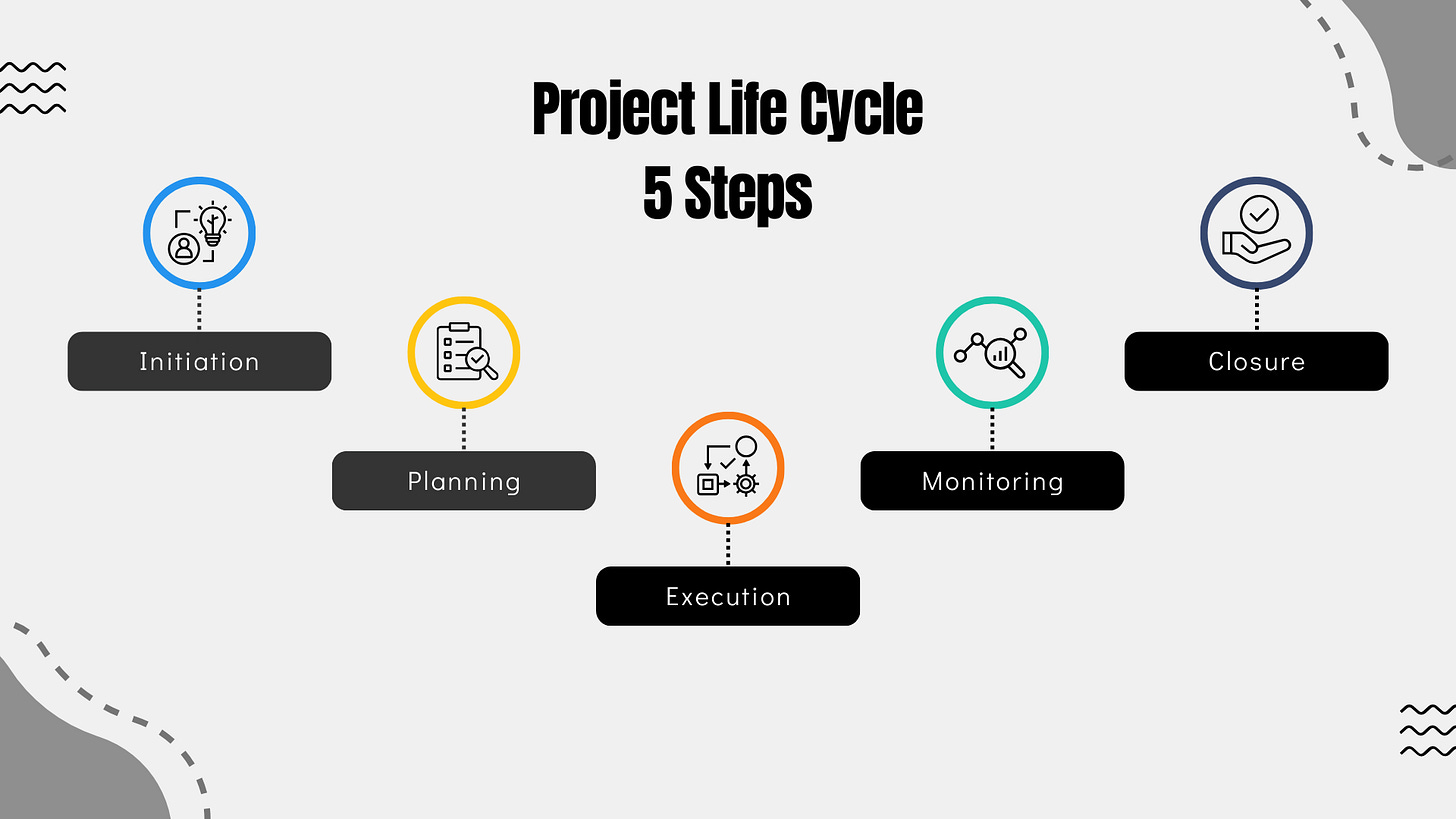Navigating the Project Lifecycle for New Managers
In the dynamic realm of project management, mastering the project lifecycle stands as a cornerstone for success. This lifecycle is not just a series of steps but a comprehensive roadmap that navigates projects from the spark of an idea to the final ribbon cutting. It embodies the essence of structured progression, resource optimization, and strategic vision, crucial for turning concepts into realities. For new project managers, understanding this lifecycle is akin to holding a compass in the vast wilderness of project execution. It offers clarity amidst complexity, ensuring that each project not only reaches its destination but also achieves its full potential. This article unfolds the project lifecycle, guiding new project managers through its pivotal stages and their significance in crafting successful outcomes.
1. Initiation
The initiation stage is where a project starts. It's about defining the project at a high level, ensuring there's a clear understanding of the project's purpose, objectives, and feasibility. This stage is crucial because it sets the foundation for everything that follows. Without a well-defined initiation, projects can veer off course or fail to align with organizational goals.
Example: A company decides to develop a new software product. During initiation, stakeholders meet to define the product's purpose, target market, and high-level requirements, establishing a Project Charter that outlines these elements.
2. Planning
Following initiation, the planning stage involves creating a roadmap for how the project will be executed, monitored, and controlled. It includes setting goals, defining roles and responsibilities, developing schedules, and planning resources and budgets. Planning is vital for setting clear, actionable steps and ensuring resources are allocated effectively.
Example: For the software product, the project team develops a detailed project plan, including a work breakdown structure, timelines, budget estimates, risk management plans, and communication strategies.
3. Execution
Execution is where plans are put into action. This stage involves coordinating people and resources to carry out the project plan. It's important because it's where the project's deliverables are created and progress is made towards objectives. Effective execution requires strong leadership and communication.
Example: The development team starts coding the software, following the project plan. Regular meetings ensure tasks are on track, and resources are managed efficiently.
4. Monitoring and Controlling
This concurrent stage with execution involves tracking the project's progress and performance to ensure it adheres to the plan. It's crucial for identifying issues early and implementing corrective actions to keep the project on track. Monitoring and controlling cover aspects like scope, schedule, cost, and quality.
Example: Project managers use project management software to track progress, comparing actual performance against planned. Regular status reports help identify any deviations, allowing for timely adjustments.
5. Closure
The final stage marks the completion of the project. It involves wrapping up activities, delivering the project to the customer, releasing project resources, and evaluating what went well and what didn't. Closure is important for formally concluding the project, learning from the process, and recognizing the team's efforts.
Example: Once the software is developed and tested, it's handed over to the client. The project team then conducts a post-mortem meeting to discuss lessons learned and documents these insights for future projects.
Understanding and navigating these stages with skill and awareness is crucial for new project managers aiming to lead successful projects. Each stage contributes to a project's lifecycle, offering a structured yet flexible framework for achieving project objectives.
The project lifecycle provides a structured framework for managing and executing projects, ensuring clarity, efficiency, and effectiveness from inception to completion. It guides project managers and their teams through a series of stages—initiation, planning, execution, monitoring and controlling, and closure—each with specific objectives and deliverables. This lifecycle enables the systematic progression of tasks, optimal resource allocation, risk mitigation, and stakeholder engagement. By adhering to these stages, projects are more likely to meet their goals, stay within budget, and conclude on schedule. It's essential for achieving project success, facilitating continuous improvement, and fostering accountability and transparency throughout the project management process.





